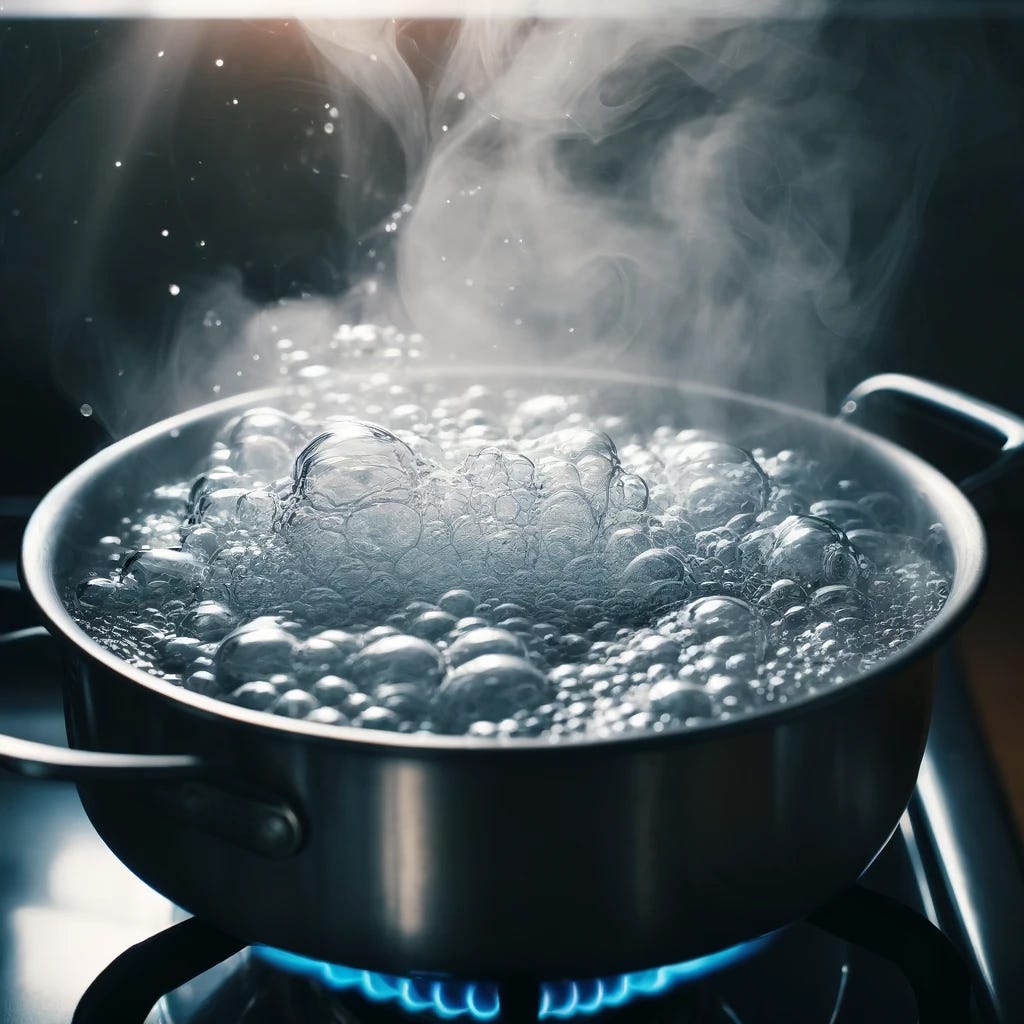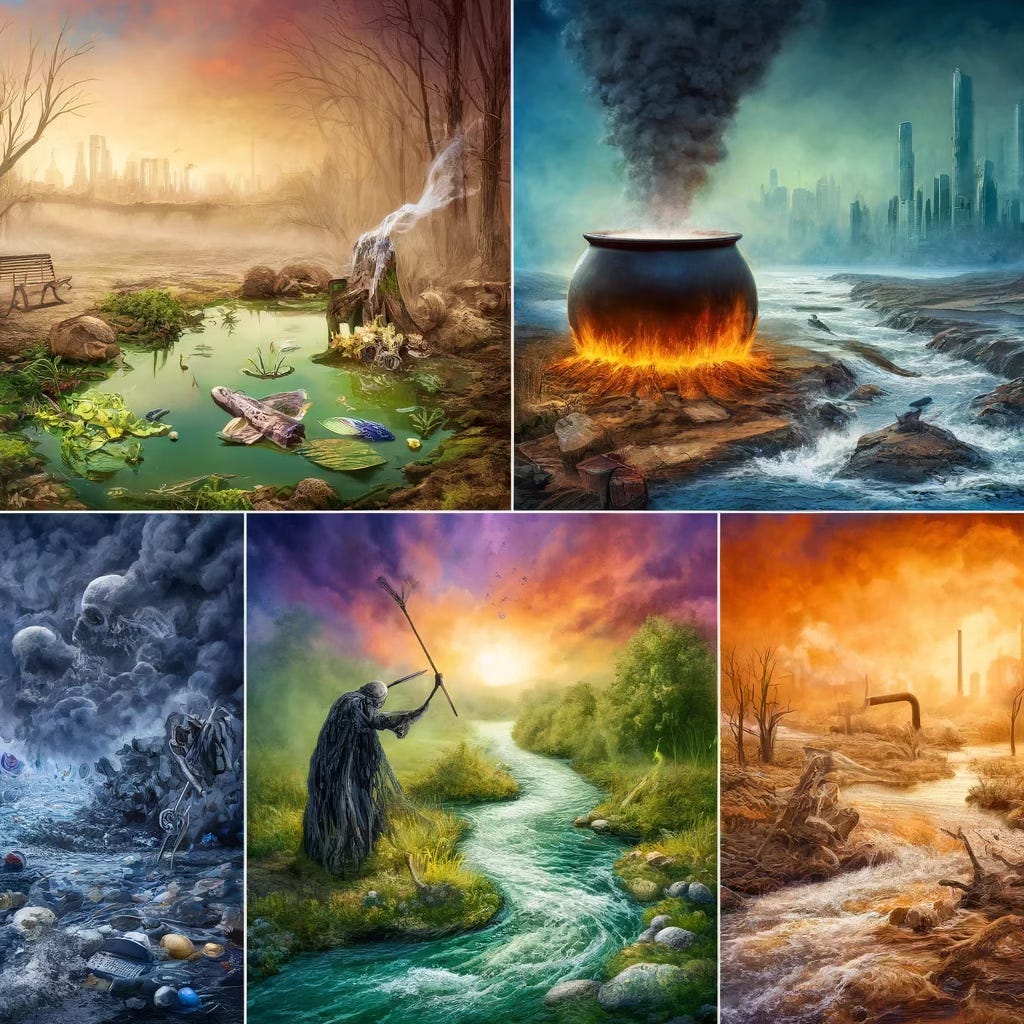The same boiling water that can harden an egg, is the same boiling water to soften a potato.

Water is the bloodstream of the Earth.
Vital for life, it circulates through our daily environment, sustaining life, facilitating growth, and connecting various ecosystems. Similar as blood flows through an organism, connecting organs and maintaining life processes; it’s involved in nearly every biological process, from regulating body temperature to transporting nutrients & oxygen to cells
Water is multi-dimensional.
It is used for a variety of purposes including cooking, sterilizing, & purifying.
When water boils, bubbles form in the water & rise to the surface, releasing heat and energy.
Water is the universal solvent.
It can dissolve more substances than any other liquid. This property makes it vital in both biological and geological processes
→ Follow The Flow ←
Water a foundation of Finance.
Here are some examples where terms related to water are used in financial contexts, illustrating the interconnectedness of these concepts:
River Bank & Central Bank:
River Bank: Literally, the sides of a river, holding and guiding the flow of water. In a metaphorical or symbolic sense, it can represent stability and direction.
Central Bank: The principal monetary authority of a country, which regulates the money supply and banking sector, similar to how a river bank guides and contains the flow of a river.
Liquid/Liquidity:
Liquid: In a general sense, something that flows easily, like water. In finance, liquidity refers to the ease with which an asset can be converted into cash without affecting its market price.
Liquidity: The availability of liquid assets to a market or company. Like water, liquidity is essential for the health and functioning of financial systems, enabling smoother transactions and more stable economies.
Cash Flow:
Flow: In nature, this would refer to the movement of water. In finance, cash flow describes the movement of money in and out of a business, highlighting the importance of maintaining a healthy "flow" of funds to ensure operational stability.
Frozen Assets:
Frozen: Water turned into ice, immovable and solid.
Frozen Assets: Refers to assets that have been immobilized or are temporarily unusable, much like water that has frozen and cannot flow until it thaws.
Stream of Income:
Stream: A small, steady flow of water.
Stream of Income: A consistent or steady flow of money, typically referring to regular earnings from a job, investments, or business activities.
Current Account:
Current: The flow of water in a river or sea.
Current Account: In finance, a current account can refer to an account that is intended for everyday access and use, emphasizing the ongoing, fluid nature of transactions.

Identical to humans — water, too, can become toxic by the influences of its surroundings.
Water serves as a powerful metaphor in many contexts, including describing toxic environments related to people, habits, or cultural atmospheres.
Here are some metaphors that use water to illustrate such environments:
Stagnant Pond: This metaphor likens a toxic environment to a stagnant pond where water does not flow. It represents a place where ideas, behaviors, and attitudes do not change, leading to decay and fostering a breeding ground for negativity, much like a stagnant body of water that becomes a haven for bacteria and pests.
Boiling Cauldron: Referring to a highly toxic and volatile environment as a boiling cauldron captures the dangerous, unpredictable, and heated nature of such settings. Like water that boils furiously, it suggests a place where tensions and conflicts constantly surface, making it inhospitable and harmful.
Polluted Stream: This metaphor highlights an environment contaminated by negative influences or bad habits, much like a stream that has been polluted by harmful substances. It suggests that the flow of life is tainted, affecting all who rely on it and making it difficult to find clear, healthy waters until the source of pollution is addressed.
Flooded Waters: Using the image of an environment overwhelmed by floodwaters, this metaphor describes situations where negative elements (like toxic people or overwhelming negative habits) inundate and overpower the normal function of life, leading to destruction and loss, much like a flood that disrupts and damages everything in its path.
Toxic Tide: This metaphor draws on the imagery of a rising tide that is toxic, slowly enveloping and poisoning everything it touches. It symbolizes an environment where harmful practices, attitudes, or cultures gradually dominate, leaving little room for healthy growth or development.

Water is a crucial asset to our ecosystems, environment & entirety of earth.
Yet, 75% of Americans are chronically dehydrated, according to some studies.
Water can also be a liability.
As the Gen Z would say, “People are thirsty.” And I’d agree.
I believe we have reached a point in society, where people are craving purity.
Purity in people. Like water, pure people is vital in a thriving life.
You can’t change the people around you… but, you can change the people you are around.
I remind you…
The same boiling water that can harden an egg, is the same boiling water to soften a potato.
It is not the gentle warmth of bathwater that reveals our true strength, but the fierce heat of boiling waters.
Not everyone can handle the heat.
The heat softens most & hardens few.
PS - if you want to connect, send me a text.






Water is one of the few substances (actually, the only one that comes to mind) where the solid phase is less dense than the liquid phase. That's why ice floats. With most substances, when it precipitates, it falls to the bottom, or "out of solution."
That reminds me of some concepts you didn't cover that I thought about while reading:
Solution = the answer to a problem; a mixture of things (usually aqueous).
Workflow, flowchart (the flow of any process mapped out).
I had thought of others, but forgot them after getting distracted, before I got a chance to post my comments. ;>p